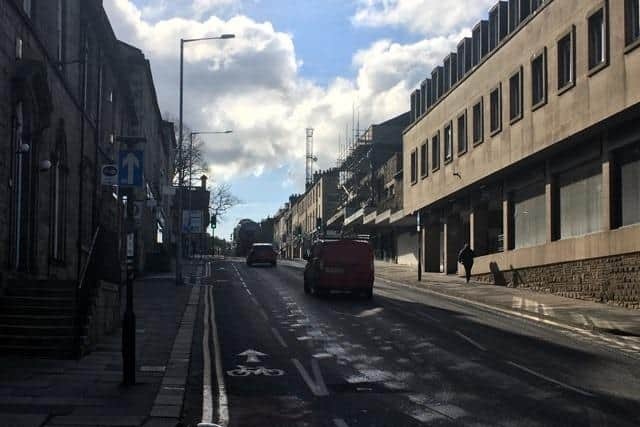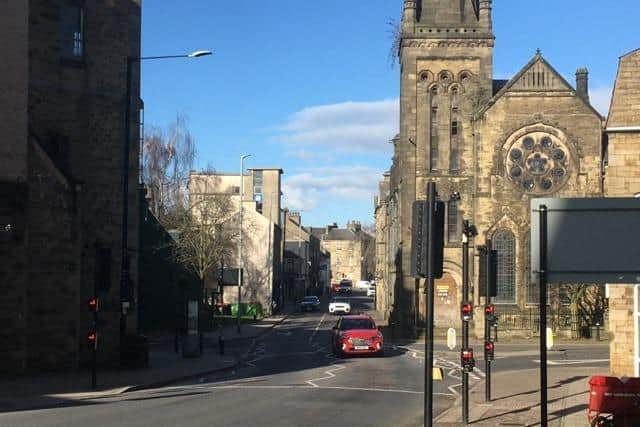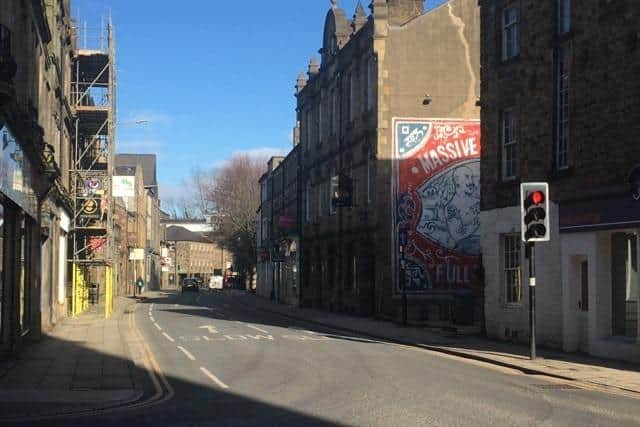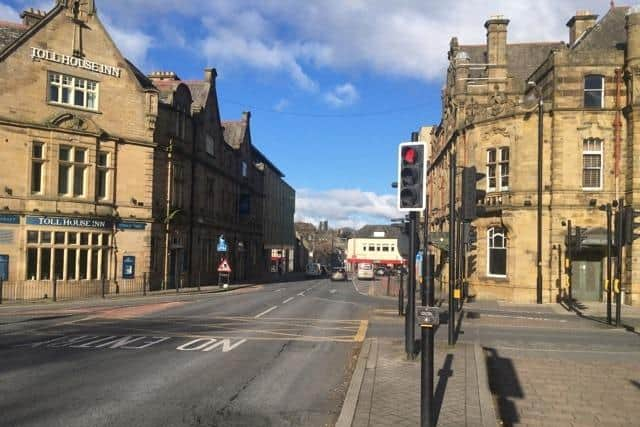How Lancaster's ambitious new transport strategy could create 'more vibrant, pleasant streets with better air quality'
and live on Freeview channel 276
Last, week, Lancashire County Council's cabinet voted in favour of several options that will change the way traffic, pedestrians and cyclists move through the city centre.
It also voted on its preferred route for a south Lancaster by-pass.The Lancaster City Centre Movement and Public Realm Strategy aims to prevent road traffic growth within the central Lancaster area, and, if certain options are approved, would split the city's gyratory system in two.
Advertisement
Hide AdAdvertisement
Hide AdLancaster City Council's cabinet member for economic regeneration and planning said the proposals would create a more-welcoming environment for cyclists and pedestrians, and more direct routing of buses through the city.


Coun Janice Hanson said the work would also be a key component of the city council’s climate emergency response as the district moves towards a low-carbon future.
A consultation with members of the public, businesses and other organisations in Autumn last year resulted in a preference of three options, which are now being explored in greater detail.
However, there was some concern expressed about the potential impact the different route options would have to business in the city centre - both during the works and once they had been completed.
Advertisement
Hide AdAdvertisement
Hide AdAmong other things, concern was also raised that some of the route options would relocate existing problems of congestion and air quality in the city centre to residential neighbourhoods.


Many respondents noted the need for more detailed modelling to be undertaken so that aspects such as 'rat running' could be accurately addressed.
See more from the consultation HERE.One of the preferred option would see two way traffic allowed on the western arm of the city's gyratory system - which includes Penny Street, King Street, China Street and Cable Street.
The eastern arm - Great John Street, Dalton Square and Thurnham Street - would be prioritised for sustainable travel only, with exceptions for emergency vehicles and local access.
Advertisement
Hide AdAdvertisement
Hide AdThis is described by the county council as "Route 4 Sustainable Travel Corridor East", and was the preference of 111 respondents in the consultation.


Another option - "Route 8a City Centre Clean Air Zone" - would see the city centre becoming a Clean Air Zone (CAZ).
This would mean all vehicles travelling through the city centre are subject to a £12 charge, with some exceptions.
Under this route option, which was backed by 109 consultees, the western arm of the gyratory would be used for vehicular traffic using the clean air zone with the eastern arm used as a sustainable travel corridor.
Advertisement
Hide AdAdvertisement
Hide AdA third option, which was backed by 108 consultees, would involve "no through city centre traffic".


The eastern arm of the gyratory would be prioritised for sustainable travel with the western arm allowing two way traffic for access with a section at China Street fully pedestrianised.
The county council said that these three options are now being taken forward for detailed analysis and will inform a consultation on a preferred option (representing one of these or a 'hybrid' option) which is anticipated to be held in late summer 2021.
Lancaster City Council's cabinet member for Economic Regeneration and Planning, Janice Hanson, said: “Lancaster City Council’s adopted its new local plan last summer which sets out much development is needed in the district over the next 10 years to provide the homes and jobs to support a growing economy.
Advertisement
Hide AdAdvertisement
Hide Ad"Accommodating this growth will need new infrastructure and new approaches about how residents, visitors and businesses use the local transport network, especially Lancaster City Centre.
“The city council has been working in partnership with Lancashire County Council to explore what new infrastructure and transport measures are needed to support development, especially the proposed Bailrigg Garden Village in South Lancaster, while also improving the quality of the experience for those living, working, visiting and using services in Lancaster City Centre.
"We will continue to work with the county council as work progresses on drawing up a masterplan for Bailrigg Garden Village, and this will be the basis for a new local development plan for South Lancaster.
“Following consultations at the end of last year, Lancashire County Council, the local transport and highways authority, has made a significant decision about the route of a new link road from a re-designed Junction 33 that will give access to the proposed Bailrigg Garden Village and has also decided which three of eight possible options to explore for managing transport and movement in Lancaster City Centre.
Advertisement
Hide AdAdvertisement
Hide Ad“A key principle of the project to reconfigure the city centre’s road network will be the creation of a more-welcoming environment for cyclists and pedestrians, and more direct routing of buses through the city.
"The city council is pleased to note that the city centre options selected by the county council for further analysis involve ambitious change, and that this has the potential to contribute positively to more vibrant, pleasant streets with better air quality.
"Above all, the options that have been selected provide the greatest opportunity to beneficially change travel behaviours, and the work being undertaken will be a key component of the city council’s climate emergency response as the district transitions to a low-carbon future.”
Other responses to the consultation included the need for a new bridge across the River Lune, to support movements to the Bay Gateway and the servicing of the Lune Industrial Estate, as well as business and residential areas along the quay.
A number of stakeholders also indicated a preference for route options to be focused upon the eastern arm of the gyratory to support development in the Canal Quarter and the Heritage Action Zone.
Comment Guidelines
National World encourages reader discussion on our stories. User feedback, insights and back-and-forth exchanges add a rich layer of context to reporting. Please review our Community Guidelines before commenting.